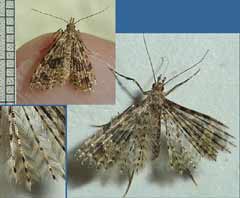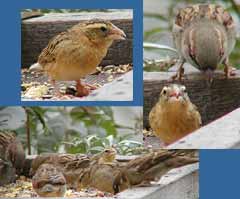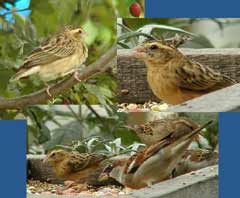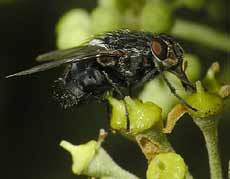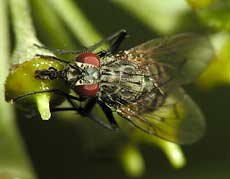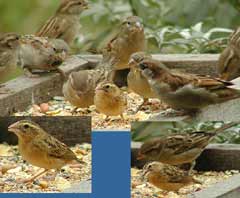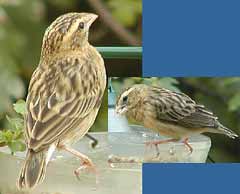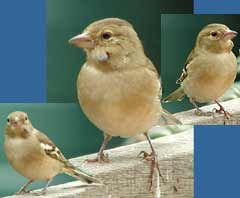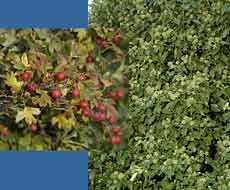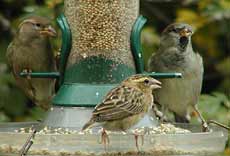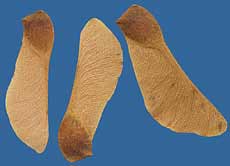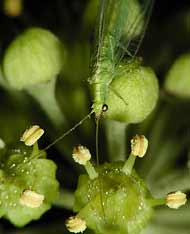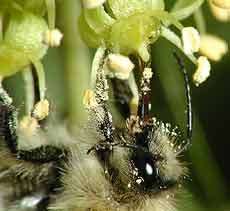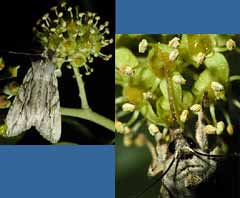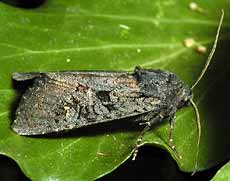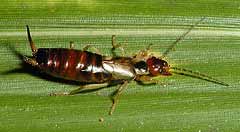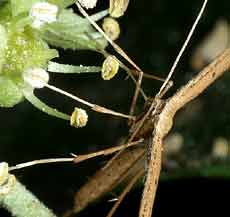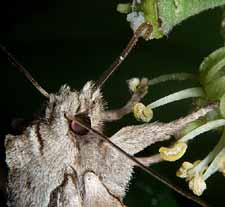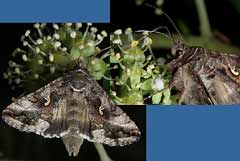Go to last entry.......................................Go to previous entry5 October - One problem with Chronic Fatigue Syndrome is that when you take too much advantage of a 'good' spell you know that the CFS will come back with a vengeance afterwards. Since my last entry work in the garden has been at a standstill and I have had a restful(!) period. During that time we have actually had some rain, although not much, and the daily temperatures have dropped. The maximum today was 12C although it felt colder in the shade because of a northerly wind, despite blue skies all day.
It was this small (about 8mm long), Many-plumed Moth (Alucita hexadactyla - I think). Its wings are each divided up into six plumes that look a bit like feathers. I had just had a shower and in the right-hand image you can see that the moth has it proboscis extended as it is sampling the condensation on a tile.
6 October - A cloudy, windy, but dry today and not so cold as yesterday. I am still looking at the bottom of the garden rather than working there, but I did get the camera into use.
Then I suddenly realised that there was an intruder amongst them. Much smaller than the Sparrows but not intimidated by them, it is finch-like and its very short tail feathers suggest that it is a juvenile.
Compared with the Sparrows it seems somewhat yellowish, although on its own it looks less so. It wasn't possible to get a decent close-up of it, and the 'session' ended with the sudden appearance of a ginger cat! Hopefully I will see it again tomorrow. I can't make up my mind what it is so I am hoping for some help from the uk.rec.birdwatching newsgroup.
I also spent some time down by the Ivy tree again, hoping to get some pictures of one of the few social wasps that are now visiting. That proved impossible as they were very sensitive to movement and always stayed a move ahead of me.
It's fascinating to compare their heavyweight sucking mouth parts to the delicate proboscis of a moth or butterfly. The lower end of the structure (called a labium) is used to mop up liquids from surfaces - ideal for the exposed nectar that oozes out of the Ivy flower.
Here, another species of fly with similar equipment also takes advantage of the liquid food supply.
The Ivy is in a sort of half-way stage at present. The first flush of flowers have now lost all their anthers and petals (or are they sepals?), as seen in these pictures, even though they are still producing a lot of nectar. Is this a sign that they are still trying to attract insect that may rub pollen onto the central stigma of each flower. There is another, equally large, 'layer' of flower buds on the verge of opening, so we can look forward to a couple more weeks of activity, especially if we get another period of sunny weather. As a footnote to the day's entry - as I write this at just after 6.15pm our little finch visitor is at the feeder, long after the last Sparrow has disappeared for the night!
7 October - An update on our finch visitor on a blustery, showery morning-
No wonder I couldn't identify it yesterday! These pictures were taken this morning as it once again joined the Sparrows for repeated visits to the table.
Another unusual sighting in the garden came while I was busy talking on the telephone and caught a brief glimpse of a Grey Squirrel bounding down the garden - no chance of a photograph. We haven't seen one here for a quite a number of years, certainly well before I started the diaries. Although I haven't photographed a hedgehog for ages, we have regular visits from at least a pair of them. I usually see them sniffling around where I throw chopped peanuts as ground feed. Having said that, I haven't seen any signs of them over the last two nights.
The little finch continues to stay around and feed with the crowd and was either on the table or at the feeder most times I looked out.
Visits by a pair of Chaffinches are quite regular although they usually head for the ground under the Hawthorn. Today, this female joined the Sparrows and the finch as they fed on the table. It wasn't until I looked at several images that I realised that she has a problem. The lump just below her beak looks suspiciously like a large tick rather than a growth, although I may be corrected on that.
We also had a Coal Tit come to the feeders several times during the morning -things are starting to look up on the bird front.
The strong winds are helping to strip leaves from the Hawthorn (and the Birch) and we are reaching the time when it is becoming easier to see through it. In contrast, the Ivy, with its huge numbers of flowers continues to provide dense cover for the birds.
9 October - Another glorious Autumn day with virtually uninterrupted sunshine and mild temperatures. After a long, frustrating break from activity I managed to spend some time at the bottom of the garden today, continuing to prepare the spot where the birdbox will be moved to in the near future. On of the things I still need to put in place is an underground pipe through which the video cables will cross the garden.
It has been fascinating to see how it tagged on to the Sparrows with no sign of being intimidated by their much larger size. Also they seem to have completely accepted its presence and have shown no aggression at all towards it. Late this afternoon I spent time watching the Sparrows feeding but this time there was no sign of the finch. Earlier, while I was outside, the sparrows were caught completely off guard by a surprise attack by the Sparrowhawk. It left quickly, but because the sun was shining in my line of sight I couldn't see if it took anything away.
The gusty winds have continued today, and for the first time that I can remember I'm finding winged Sycamore seeds in the garden, presumably from a tree that has matured in the Brickfields Park.
10 October - An overcast day, still breezy and with just the faintest touch of dampness. There has been no sign of the little finch today. In its absence the sparrows have been very vocal with quite a bit of squabbling going on between them.
I checked the Ivy tree tonight. Many of the new batch of flowers are sporting anthers now and the aroma is overpowering. However, although it is quite mild outside, and the wind has died down, the only insect I could find on them was this solitary Lacewing heading for a meal. The weekend weather forecast is good. Perhaps the sunshine will encourage more visitors to ensure a good crop of berries this winter.
14 October - The dry weather continues. Over the last few days my time has alternated between doing work in the garden or being too weary to do anything! Yesterday was nearly all taken up with 're-potting' some bamboo plants that son Simon has turned up with. The tallest is over 12ft high and they were being thrown away by one of his clients. They will be ideal for putting into the corners of the area I'm creating where the Leylandii once stood.
I continue to monitor the Ivy and have been disappointed by the lack of insect interest in it over the weekend. In the daytime I have seen only a few flies and the occasional bee visit. IN this close-up you can see the bee's long 'tongue' (or glossa) as it collects the nectar.
In the evenings I have seen it equally quiet with only a couple of moths and earwigs in attendance! Last night this was the only moth I saw. In the enlarged image, look carefully at its extended proboscis. I think the dark line up the middle of it is the column of nectar, and you can see gaps in it where the moth is sucking up air bubbles!
This was the only other moth seen on the Ivy. It had already fed and had moved onto a leaf by the time I had my camera ready.
The earwigs have proved to be too elusive to photograph at the Ivy, so this picture was taken of one hunting on a bamboo plant. My presence detected, it is holding up its characteristic 'forceps' as a defence. These are the insect's cerci appendages. The fact that they are nearly straight shows that this is a female, those of a male being very curved.
No signs of the finch visitor any more, but during the weekend we again had visits from a Coal Tit, in addition to a Great Tit and our usual Blue Tits. There were twelve Collared Doves on the ground at the same time during the morning on Sunday(12th) -the largest group I can remember seeing here. We are starting to see more Blackbird activity in the garden after what seems like a long gap. At least one of them is an immature male which, although largely black, still has immature brown coloured feathers around the head. Today I managed to get the birdbox moved to almost its new position, leaving a few bit and pieces to be done tomorrow before the move can be completed. Then there will be a big clear-up of lots of junk that needs to be thrown before I can start on the next part of the job - that of landscaping the area created by the changes. Also today I have ordered a new camera, the Olympus E20. While the 2100UZ is a great camera, and I will certainly continue to use it, the E20 has a much higher resolution to give me better quality for prints.
15 October - With the dry, largely sunny weather continuing, today has been very frustrating. After yesterday's endeavours I have had one of those very weary days, and to complicate matters, the camera arrived first thing this morning! There is a lot to learn about it but I have already been investigating how to use it for macro work. The techniques I used with the 2100UZ are not all suitable with the E20, so I will need to do some experimenting when I'm more awake.
There were just three moths about when I spent time looking at the Ivy around 9pm. The first was this Plume Moth, a species that has appeared a number of times in the last few weeks.
This second image is a close-up of a moth that is the same species as the first one pictured in yesterday's entry. If you look at the enlarged image you will see how the proboscis has hairs on it, something I hadn't seen previously.
Unlike the first two moths, this one continued to vibrate its wings while it fed. I think that this one is a Silver Y (Autographa gamma).
20 October - The weather is getting colder, with a brisk Northerly wind, but it continues dry and mainly sunny. I'm afraid that I haven't picked up my camera since the last diary entry. The bottom of the garden has dominated my time (other than a trip with Sheila for her to buy an embroidery machine!) and when I'm back in the house I've been too ready to flop. The birdbox is now in its new position, the new retaining walls for a raised section of garden are now complete. Today I managed to dig up the roots of the Ivy plant that had grown up in front of the birdbox, and the Ivy (complete with the lattice panel on which it grew) has now been replanted next to the Ivy tree in such a way that it is available for nesting by the Robin (as happened this Spring). I have started levelling out the soil on the raised area, although I now need to dig a shallow trench across it to bury a drainpipe through which the video cables for the birdbox will be routed. When that is done, part of the area will be paved. I had been trying to get as much as I can done before the rain finally arrives. However, I have decided to take things easy over the next few days, so I may get round to taking some photographs again. I have been checking the Ivy each day and night. Yesterday there seemed to be more insects, including a Red Admiral, about during the day, but I have seen nothing during the evening inspections. Today I had a close encounter with the Sparrowhawk and in doing so saved a Collared Dove from a sudden end. I was at the bottom of the garden when I heard all hell break out at the Hawthorn. I ducked under the branches of the Birch tree to see the Sparrowhawk flying straight for me with the Dove in its grasp and white feathers being scattered over the pond. As it swerved to avoid a collision its grip was eased and the dove was able to escape. The two birds flew past me, one on each side and at about chest height - I didn't have time to duck, but neither of them hit me. They left the garden in different directions. |
|
2003 Garden Diary Index........Last Month.......bNext Chapter(November) |
